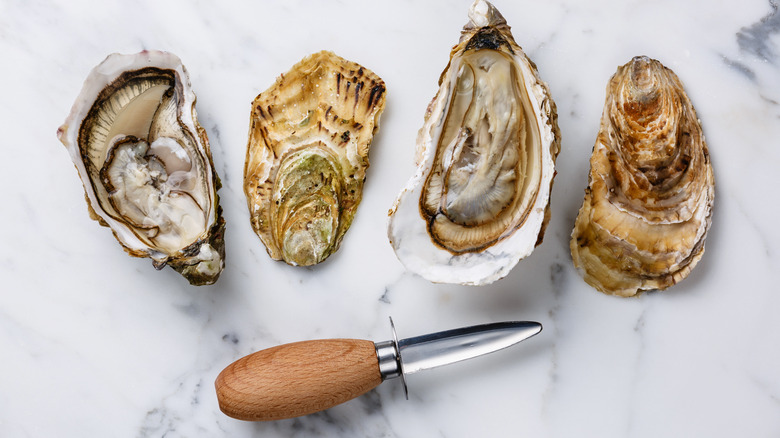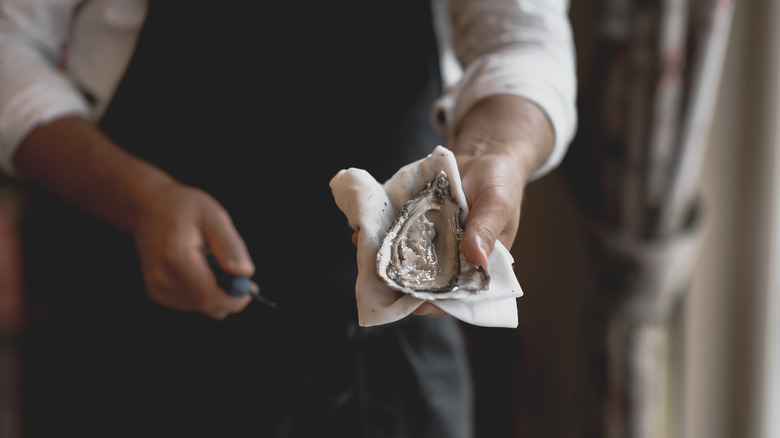How Oyster Shucking Helped African Americans Post-Civil War
Oysters are a delicacy that was once plentiful; at the time of the arrival of European colonizers, Manhattan was a seafood haven covered in oyster beds during the 17th century. By the 19th century, the New York Harbor was the largest source of the edible mollusks, according to Food Republic. Whether fried, eaten raw, dipped in butter, or made into an oyster stew, the masses loved consuming oysters to the point where the beds were ravaged down to nearly nothing.
Oysters were eaten with gusto at oyster cellars or saloons, and unlike the high-class affair they mostly are today, they were enjoyed by people from all different class backgrounds, as reported by the Bard Graduate Center. Due to the efficacy with which oysters can be served and consumed, this raw treat appealed to both industrial workers and upper-class businessmen alike. But the history of oysters bridging class gaps doesn't end there. Before the commercial oyster craze, oysters were eaten sustainably by Indigenous peoples of America (via Popular Science) in a manner that is being studied today by researchers. And post-Civil War, oyster shucking was a way for African Americans to find a new way of life after slavery.
Oyster shucking autonomy
According to Way Too Complicated, many recently liberated African American men became employed as oyster harvesters, and their dominance in the industry led to the formation of entire communities revolving around the work of shucking oyster shells. One episode of the Netflix series "High on the Hog" tells the ascent of Thomas Downing, a man born to slave parents that later became the so-called "oyster king of New York City," as reported by Thrillist. While African Americans had worked in the oyster industry pre-Emancipation, once liberated, they were able to take home the bulk of the profits for themselves.
Additionally, the nature of selling oysters gave many African Americans much more freedom and autonomy in comparison to other jobs that still had them under a hierarchy, per NC State University, because they could venture out into the waters to harvest alone and then sell their bounty, their oyster careers were literally in their own hands. This path to freedom led to Sandy Ground, the oldest standing free Black community in New York, which to this day remains the home of descendants of the original oyster-shucking settlers.

